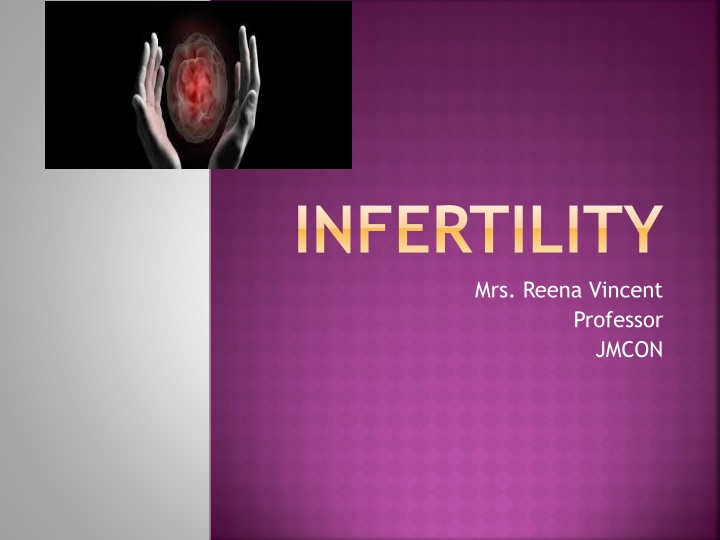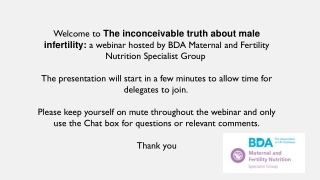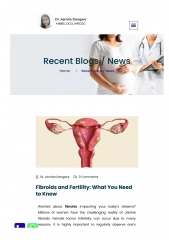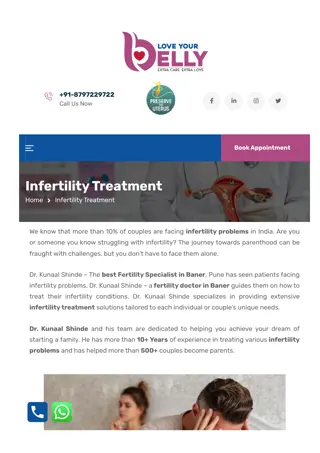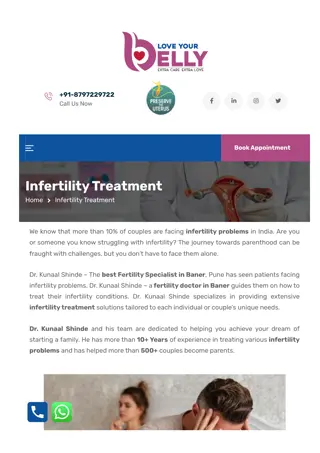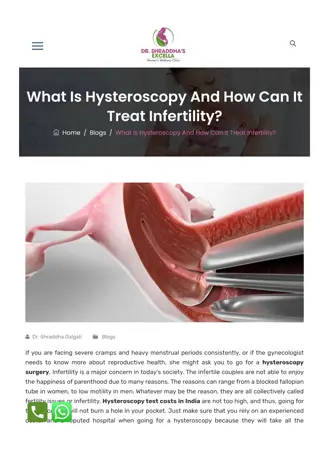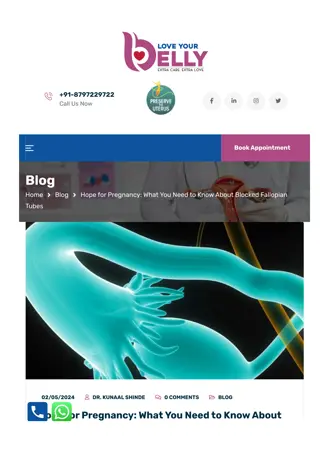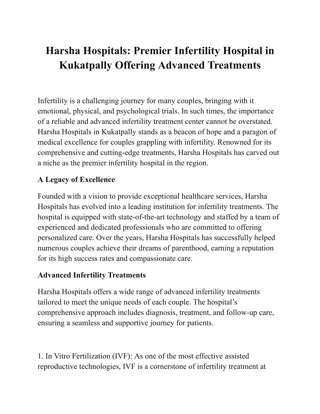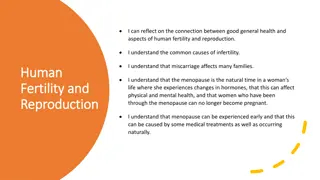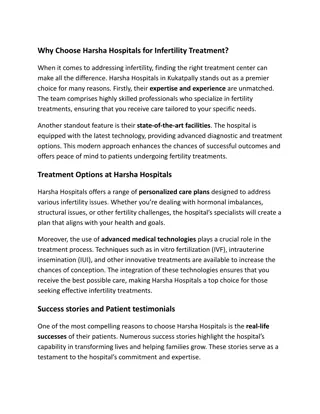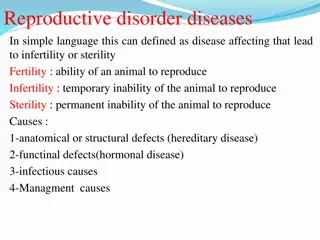INFERTILITY
In this educational material, Mrs. Reena Vincent, a professor at JMCON, introduces students to the world of infertility, covering definitions, types, and incidences. Detailed discussions on male and female infertility causes, investigations, and management are provided to deepen students' understanding. Additionally, the ethical aspects and the role of nurses in infertility management are highlighted, preparing students to provide informed care to couples facing fertility challenges.
Download Presentation

Please find below an Image/Link to download the presentation.
The content on the website is provided AS IS for your information and personal use only. It may not be sold, licensed, or shared on other websites without obtaining consent from the author.If you encounter any issues during the download, it is possible that the publisher has removed the file from their server.
You are allowed to download the files provided on this website for personal or commercial use, subject to the condition that they are used lawfully. All files are the property of their respective owners.
The content on the website is provided AS IS for your information and personal use only. It may not be sold, licensed, or shared on other websites without obtaining consent from the author.
E N D
Presentation Transcript
INFERTILITY Mrs. Reena Vincent Professor JMCON
CENTRAL OBJECTIVE Students acquire depth knowledge about infertility and its management and able to describe and apply knowledge while giving care to the infertile couples .
SPECIFIC OBJECTIVES At the end of the class, students will be able to - define infertility - describe the incidence of infertility - enumerate the causes of male infertility - explain the investigations of male infertility - describe the management of male infertility - list the causes of female infertility
- describe the investigations of female infertility - explain the management of female infertility - explain assisted reproductive technology - enlist role of the nurse in infertility management. - Identify the ethical and legal issues related to ART.
INFERTILITY - DEFINITION Failure to conceive within one or more years of regular unprotected intercourse.
TYPES Primary infertility denotes those patients who have never conceived. Secondary infertility indicates previous pregnancy but failure to conceive subsequently.
INCIDENCE OF INFERTILITY WHO estimation World wide 60 to 80 million couples suffer from infertility In India between 3.9 16.8% In Kerala around 20% Male infertility 30 40% Female infertility 40 - 55%
CAUSES OF MALE INFERTILITY 1.DEFECTIVE SPERMATOGENESIS- (production of sperm cells) Inadequate sperm count -20million per milliliter of seminal fluid at least 50% of sperm should be motile and 30% should be normal in shape and size. Causes are Congenital Undescended testes (cryptorchidism),hypospadias and epispadias
Thermal factors Scrotal temp is increased in case of varicocele (varicosity of the spermatic vein ) big hydrocele/filariasis. Using tight under garments Working in hot atmosphere Trauma to the testes General factors malnutrition or heavy smoking ,excessive alcohol reduces to the spermatogenesis
CONT Endocrine disorders dysfunction of hypothalamus ,pituitary, adrenals Gonadotrophin deficiency ,thyroid Systemic diseases DM,renal failure Genetic Iatrogenic- cytotoxic , drugs, antihypertensive, anticonvulsant ,antidepressant Immunological factors
II Obstruction or absence of seminal Infection- Mumps orchitis after puberty(testicular inflammation and scarring due to the mumps virus) ,Epididymitis ,tubal infections congenital anomalies, and trauma Impaired secretions from seminal vesicles Infection Metabolic disorders
Psychosexual problems(impotence ) Physical disability Drug induced (erectile dysfunction)
Failure to deposit sperm high in the vagina.(coital problems ) Ejaculatory defect Premature retrograde(ejaculation via urethra is redirected into Bladder ) or absence of ejaculation Sperm abnormality-loss of sperm motility (asthenospermia ) abnormal sperm morphology Errors in seminal fluid Unusually high or low volume of ejaculate Low fructose content High prostaglandin content Undue viscosity
INVESTIGATIONS IN MALE INFERTILITY Clinical approach to investigations HISTORY Age Duration of marriage Contraceptive used History of previous marriage Sexual dysfunction
General medical history STD, mumps orchitis after puberty, DM, recurrent chest infection, bronchiectasis ,relevant surgery such as herniorrhaphy,operation on testes sexual history,erectile dysfunction, social habits particularly heavy smoking and alcohol.
PHYSICAL EXAMINATION- BMI, hair, growth and gynecomastia inspection and palpation of genital area. size and consistency of the testes , Undescended testes Varicocele
INVESTIGATIONS IN MALE INFERTILITY Routine, urine Blood test,PPBS Semen analysis SPECIFIC INVESTIGATIONS OF INFERTILITY Immunological test Karyotype analysis Serum FSH,LH,testosterone ,prolactin ,TSH Testicular biopsy Trans rectal USG Vasography
Scrotal ultrasound. Help to find out if there is a varicocele or other problems in the testicles and supporting structures Transrectal ultrasound. It allows your doctor to check your prostate and look for blockages of the tubes that carry semen. Hormone testing. Hormones produced by the pituitary gland, hypothalamus and testicles play a key role in sexual development and sperm production. A blood test measures the level of testosterone and other hormones.
Post-ejaculation urinalysis. Sperm in your urine can indicate your sperm are traveling backward into the bladder instead of out your penis during ejaculation (retrograde ejaculation). Genetic tests. When sperm concentration is extremely low, there could be a genetic cause. A blood test can reveal whether there are subtle changes in the Y chromosome signs of a genetic abnormality.
Testicular biopsy. This test involves removing samples from the testicle with a needle. If the results of the testicular biopsy show that sperm production is normal
FEMALE INFERTILITY
CAUSES OF FEMALE INFERTILITY DEFECTIVE OVULATION Endocrine disorders-anovulation (turners syndrome-no ovaries to produce ova ) dysfunction of hypothalamus ,pituitary, adrenals Gonadotrophin deficiency ,thyroid Systemic diseases DM,renal failure Physical disorders-.general ill health. poor diet and stress. Obesity, excessive exercise . Chronic exposure to x-rays or radioactive substances Ovarian disorders-polycystic ovarian syndrome, ovarian cysts or tumours,ovarian endometriosis
DEFECTIVE TRANSPORT -Ovum Tubal obstruction Fimbrial adhesion Tubal obstruction Infection (PID, adhesions gonorrhoea,peritonitis) Fimbrial adhesion Previous surgery ,Endometriosis Cervical factors Cervical trauma or surgery Infection, abnormal cervical mucus Antisperm antibodies in mucus
CONT.. Vaginal factors Congenital anomaly-atresia of vagina ,septate vagina, narrow introitus Infection of the vagina Psychosexual problems (vaginismus) Defective implantation Fibroids, hormonal imbalance Infection , congenital malformation of the uterus Unexplained infertility
Combined factors Advanced age of the wife beyond 35yrs Infrequent intercourse, lack of knowledge of coital technique ,timing of coitus to utilize the fertile period Dypareunia Anxiety and apprehension, use of lubricants during intercourse which may be spermicidal. Immunological factors
History Age ,duration of marriage General medical history TB ,STDs ,PID, DM Surgical history abdominal or pelvic surgery Menstrual history -hypomenorrhoea, oligomenorrhoea to amenorrhea due to adrenal or thyroid dysfunction
Previous obstetric history number of pregnancies, interval between them and pregnancy related complications secondary infertility , post abortal or puerperal sepsis leads to tubal damage Contraceptive practice IUCD use may cause PID Sexual problems dyspareunia and loss of libido
PHYSICAL EXAMINATION General examination -obesity ,hirsutism, acne, under development of Secondary sexual characters,PCOD Systemic examination Hypertension ,heart diseases, chronic renal lesion, thyroid dysfunction and other endocrinopathies
Gynecological examination Adequacy of hymen opening Evidence of vaginal infections Cervical tear or chronic infection Undue prolongation of the cervix Uterine size, position ,mobility Presence of adnexal masses Presence of nodules in the pouch of douglas. Speculum examination reveal abnormal discharge ,cervical smear for screening
DIAGNOSIS OF OVULATION Indirect Menstrual history Basal body temperature Confirm ovulation and time of intercourse. Temperature must be taken on awakening before any activity start day 1 of the cycle. Day of intercourse take place also noted .
Findings Temperature rises (0.5to 10 F)sustains throughout the second half of the cycle and falls 2 days prior to the next period called biphasic pattern. Presence of biphasic pattern proves ovulation and absence of such pattern shows no ovulation Record should be continued for more than 3-4 month Cervical mucus study Alteration in the physico-chemical pattern of the cervical mucus due to the effect of the estrogen and progesterone.
Vaginal cytology Features of progesterone effect if ovulation occurs . Hormone estimation Serum progesterone day 8 and 21 of a cycle Greater than 6ng /ml suggests ovulation Serum LH surge Serum estradiol Peak rise 24-36 hours prior to ovulation
Endometrial biopsy -Uterine response to uterine activity . Help in diagnosing luteal phase defect Done on 21st -23 rd day of cycle USG- measure the grafian follicle just prior to ovulation (18-20mm) confirm the ovulation . Direct Laparoscopy visualization of recent corpus luteum detection of the ovum from the aspirated peritoneal fluid only the evidence of ovulation
TUBAL FACTORS The anatomical patency and functional integrity of the tubes are assessed by Dilation and insufflations Hystero salpingogram Laparoscopy sonohysterosalpingography Hysteroscopy Falloposcopy Salpingoscopy
1 INSUFFLATION TEST (RUBINS TEST) Done in the post menstrual phase at least 2 days after stoppage of menstrual bleeding Entry of air or co2 into the peritoneal cavity when pushed transcervically under pressure . Observation Patency of the tube is confirmed.
2 HYSTERO SALPINGOGRAM(HSG) To check uterine cavity and fallopian tubes are open and healthy X-ray procedure Injection of special dye into the cervix and into the Uterus . if the dye fails to spill out through the end of the tubes indicates tubes are blocked or spasm has occurred.
3 Laparoscopy: - Invasive procedure. - To check for pelvic disease; such as endometriosis and to check tubal patency. - Therapeutic as in laparoscopic myomectomy and ovarian drilling. 4 Hysteroscopy: - To evaluate uterine cavity and tubal ostia - In case of repeated failed IVF cycles. - Therapeutic as in intrauterine septum resection ,Poly pectomy ,resection of myoma.
5 SONOHYSTEROSALPINGOGRAPHY Normal saline is pushed within the uterine cavity with a pediatric foley catheter. catheter balloon is inflated at the level of the cervix to prevent fluid leak. USG can follow the fluid through the tubes up to the peritoneal cavity and in the pouch of douglas Advantages Non invasive procedure .it can detect uterine malformations ,polyps and tubal pathology .
6 Falloposcopy Study entire length of tubal lumen with the help of a fine and flexible fibreoptic device. It is performed through the uterine cavity using hysteroscope Helps direct visualization of tubal ostia, mucosal pattern, intratubal polyps or debris
7 . Salpingoscopy Tubal lumen is studied introducing a rigid endoscope through the fibrial end of the tube . it is performed through the operating channel of a laparoscope. Post coital test to assess the quality of cervical mucous and ability of sperm to survive in it. Immunological factor antisperm antibodies are IgG.IgM,IgA . immunoglobins can bind to different parts of the sperm and make them immobile.
MANAGEMENT OF INFERTILITY IN MALES To improve spermatogenesis : General measures. Medications Surgical treatment Psychosexual therapy Assisted reproductive therapies
To improve spermatogenesis General Improvement of general health, reduction of weight in obese, avoidance of alcohol, heavy smoking ,tight undergarments, cold scrotal bath twice in a day for 5mts each time is encouraged. Avoidance of frequent intercourse to improve sperm count.
Administration of vitamins E,C,D,B12 and folic acid to improv.e spermatogenesis
In hypogonadotrophic hypogonadism HCG 5000 IU once or twice week to stimulate testosterone production . Testosterone 100-160 mg per oral daily for 3- 4 months. Clomiphene citrate 25-50mg daily for 25 days with rest of 5 days for 3 cycles.
In presence of antisperm antibodies in the male -dexamethsone 0.5mg daily at bed time Genital tract infections need prolonged course of antibiotics . In retrograde ejaculation phenylephrine is used to improve the muscle tone of the urethral sphincter muscle.
SURGICAL MANAGEMENT Patient with azoospermic and yet testicular biopsy Shows normal spermatogenesis, obstruction of vas must be suspected . it can be corrected by microsurgery vasovasostomy Varicocele is corrected by high ligation of spermatic vein . Hydrocele must be corrected Orchidopexy in undescended testes should be done between 2 to 3 years of age.
Impotency Psychosexual treatment Medications erectile dysfunction Unresponsive cases artificial insemination
MANAGEMENT FEMALE INFERTILITY A ) An ovulation Induction of ovulation following ways may be prescribed 1 General Psychotherapy to improve emotions Reduction of weight in PCODS
